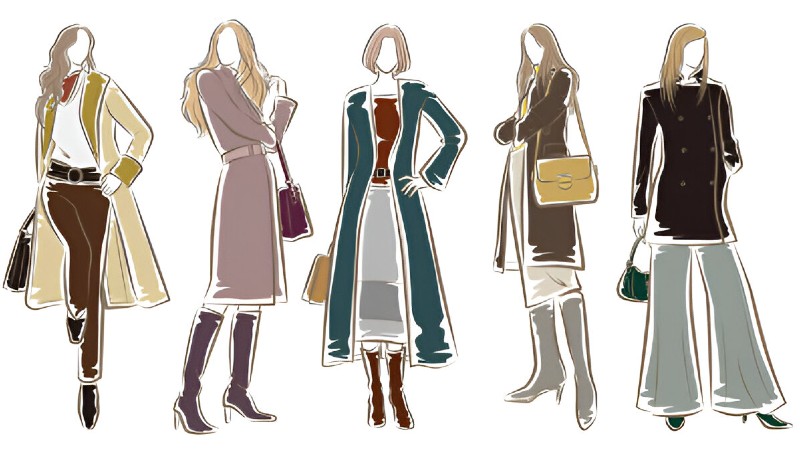
The History of Classic Fashion Trends: From the Trench Coat to the Little Black Dress
Fashion is more than clothing; it is a reflection of culture, social change, and individual expression. Among the vast and ever-evolving landscape of fashion, certain trends have remained timeless. From the iconic trench coat to the elegant little black dress (LBD), classic fashion trends continue to influence designers and wardrobes worldwide.
Understanding Classic Fashion Trends
Classic fashion trends are styles that transcend seasonal fads and remain relevant across decades. Their timeless appeal comes from:
- Functionality: Practical yet stylish, designed to be versatile.
- Quality: High-quality fabrics and construction ensure longevity.
- Elegance: Clean lines and minimal embellishments allow adaptability.
- Cultural Resonance: Often rooted in historical events or societal shifts.
These characteristics explain why garments like the trench coat and LBD are not just trends but cultural icons.
The Trench Coat
Historical Roots
The trench coat originated in the early 20th century as functional outerwear for British soldiers during World War I. Designed by Thomas Burberry and Aquascutum, the coat featured:
- Water-resistant gabardine fabric
- Epaulets for military rank
- A belted waist for practicality
- Double-breasted design for warmth and protection
The trench coat quickly moved beyond military use to civilian wardrobes in the post-war era. Its durability and sleek silhouette made it a favorite among fashion-conscious urbanites.
Cultural Evolution
Over the decades, the trench coat has been immortalized in films such as Casablanca and Breakfast at Tiffany’s, solidifying its status as a symbol of elegance and sophistication. Today, it comes in diverse styles, from classic khaki to modern leather variants, proving its adaptability.
The Little Black Dress
Origins and Inspiration
The little black dress, or LBD, was popularized by Coco Chanel in the 1920s. Inspired by the simple, practical garments worn during World War I, Chanel envisioned a dress that was versatile, elegant, and affordable for all women. Key elements included:
- Knee-length or slightly longer hemlines
- Minimalistic silhouette for versatility
- Neutral black color suitable for multiple occasions
Before Chanel, black was primarily reserved for mourning attire. The LBD transformed black into a chic, everyday fashion statement.
Iconic Moments in LBD History
- Audrey Hepburn, 1961: The Givenchy sheath in Breakfast at Tiffany’s remains a defining moment.
- Princess Diana, 1994: Her revenge dress off-the-shoulder black gown made headlines worldwide.
- Beyoncé, 2014: A modern take on sequins and tailored fit highlighted the LBD’s ongoing relevance.
Today, the LBD continues to serve as a foundation for countless fashion interpretations, from minimalistic slips to avant-garde designs.
Other Timeless Fashion Staples
While the trench coat and LBD are perhaps the most iconic, several other pieces share similar timeless qualities. Here’s a brief overview:
| Fashion Item | Origin | Key Features | Modern Relevance |
|---|---|---|---|
| Tailored Suit | Italy, Giorgio Armani, 1980s | Relaxed fit, structured shoulders, versatile for business | Business attire, red carpet events, gender-neutral fashion |
| White Shirt | USA, Ralph Lauren, 1960s | Crisp, classic cut, versatile for layering | Workwear, casual chic, formal layering |
| Ballet Flats | France, Roger Vivier, 1950s | Comfortable, low heel, inspired by ballerinas | Everyday wear, formal casual, travel-friendly |
| Biker Jacket | USA, Schott NYC, 1950s | Durable leather, edgy aesthetic, zip details | Streetwear, edgy fashion, music culture |
| Aviator Sunglasses | USA, Ray-Ban, 1930s | Teardrop lenses, metal frames, pilot inspiration | Summer wear, celebrity culture, unisex staple |
Why Classic Fashion Trends Endure
Several factors contribute to the longevity of classic fashion items:
- Adaptability: Items like the LBD can be dressed up or down for various occasions.
- Cultural Symbolism: Trench coats and LBDs carry a narrative of elegance, rebellion, or sophistication.
- Quality Craftsmanship: Durable fabrics and construction make these pieces a long-term investment.
- Celebrity Endorsement: Repeated appearances in films, red carpets, and media reinforce status.
By combining functionality with aesthetic appeal, these garments resist obsolescence and maintain relevance across generations.
Modern Interpretations of Classic Trends
Fashion designers continue to innovate while respecting tradition. Examples include:
- Trench Coat Reimagined: Designers like Burberry and Prada incorporate bold colors, leather materials, and asymmetrical cuts.
- LBD Reinvented: Alexander Wang and Dior have introduced sheer panels, high slits, and corset-inspired designs while retaining the classic black silhouette.
- Tailored Suits for All Genders: Modern designers embrace inclusivity with unisex tailored suits featuring softer fabrics and bold patterns.
Statistics on Timeless Fashion Popularity
Recent studies indicate the enduring appeal of classic fashion trends:
- Over 65% of women consider the LBD a wardrobe essential (Fashion Retail Report, 2022).
- Trench coats maintain a steady 15% annual increase in global sales (Statista, 2023).
- Tailored suits have seen a 20% rise in popularity among millennials in professional settings over the last five years (Global Fashion Survey, 2023).
Conclusion
Classic fashion trends like the trench coat and the little black dress are more than mere clothing; they are symbols of culture, sophistication, and practicality. Their ability to adapt to contemporary styles while retaining historical significance ensures they remain at the forefront of fashion. Whether through cinema, celebrity influence, or everyday wardrobes, these iconic pieces demonstrate that true style transcends time.
As the fashion industry continues to innovate, the enduring legacy of these classic trends reminds us that elegance, quality, and functionality will always hold a central place in our wardrobes.
Frequently Asked Questions (FAQs)
What makes a fashion trend ‘classic’ or timeless?
A classic fashion trend is one that remains stylish across decades. Key factors include versatility, quality craftsmanship, cultural significance, and adaptability to modern styles.
Who invented the little black dress?
The little black dress was popularized by Coco Chanel in the 1920s. It transformed black from a color reserved for mourning into a chic and versatile fashion staple.
What is the origin of the trench coat?
The trench coat originated during World War I as functional outerwear for British soldiers. Thomas Burberry designed the first version, featuring water-resistant fabric, epaulets, and a belted waist.
Are classic fashion trends still relevant today?
Yes. Trends like the LBD, trench coat, and tailored suit continue to influence modern fashion. Designers regularly reinterpret these styles while preserving their timeless appeal.
What other fashion items are considered timeless?
Other classic fashion staples include the tailored suit, white shirt, ballet flats, biker jacket, oversized scarf, and aviator sunglasses. These items combine functionality, elegance, and longevity.
How can I incorporate classic trends into my wardrobe?
Focus on quality pieces with versatile cuts and colors. Pair a timeless item like a trench coat or LBD with modern accessories or casual pieces for a contemporary look that never goes out of style.











